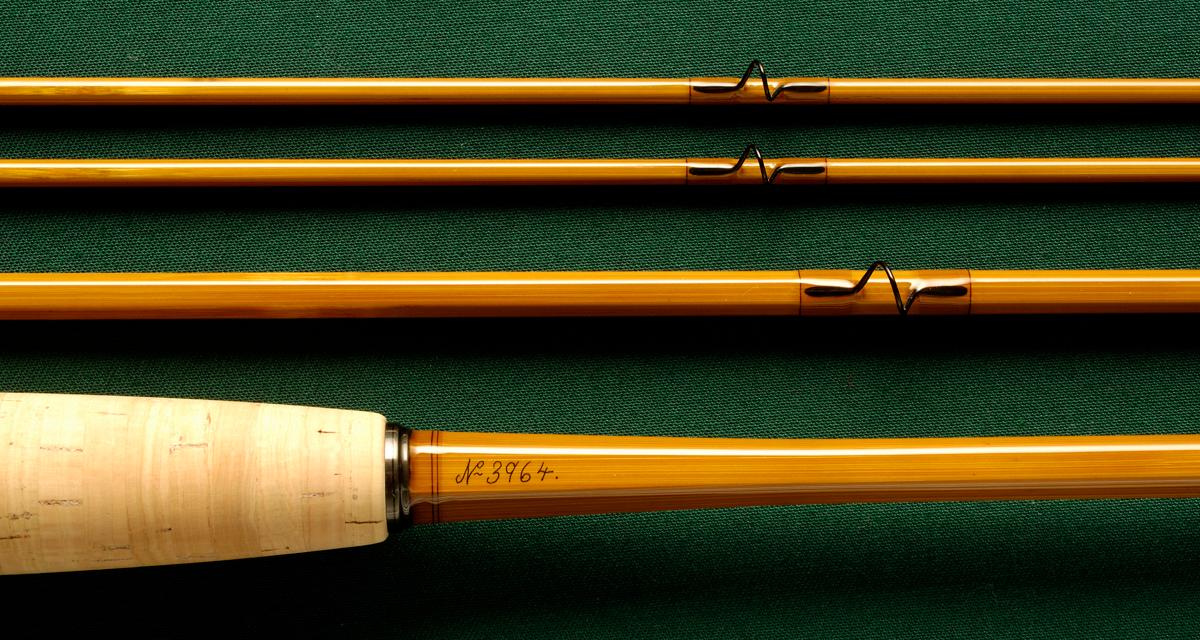
7 minute read
The impeccable Mr Barder by Clement Booth
When it comes to split-cane fly rods and me, utterly besotted is probably as accurate a way as any of describing our relationship. For me, they’re right at the epicentre of my fly fishing life, closely allied to the alpha and omega of what it’s all about.
This is not to say that I don’t on occasion reach for a graphite fly rod - absolutely I do - and in point of fact, a couple of those are also very close to my heart. When the wind gets up in Patagonia, my Burkheimer graphite rods do the business brilliantly and my affection for them runs deep.
Advertisement
One wonderful thing about a fly fishing life is that you really don’t have to choose. So, although my heart belongs to bamboo, my flirtations with graphite and even fibreglass really aren’t that infrequent!
But, when it comes to a rising brown trout on my beloved River Avon, there’s no doubt that it will be a split-cane rod that gently paints the tiny dry fly onto the watery canvas. In the right circumstances, I’m truly convinced that cane is a superior material but let’s not start a controversial discussion!
It’s really just a matter of taste, actually it’s an intensively personal decision; mine has been made and it will be split-cane for as long as I’m blessed to fish these waters.
Today, there are a number of really first class split-cane makers around the world; some are very serious part-timers but there are also a tiny handful of hardy souls who make cane fly rods for a living. Not many mind you; this is surely not an easy “calling” although that said, not many jobs in our modern world seek to create something that with reasonable care will see out a hundred or more years.
Some collect vintage cane rods and this can be an interesting and even lucrative pastime. An excellent Garrison 206 might today command well north of $10,000; Mr Garrison only made around 600 rods in his lifetime and they’ve become highly prized, as have pre-fire Leonards, Gillums or Dickersons. All of these have their place in our flyfishing world.
My own split-cane passion however leans in another direction and manifests itself in “collecting rod makers”. What I mean by this is that my preference is to personally get to know the rod makers and I have over many years acquired a few from some very fine people who practise the craft today. Ditto reel makers by the way!
I understand mass production’s inevitable march is unstoppable and it’s not all bad but I feel very strongly about that these and other crafts should be kept alive; not only preserved but actively encouraged. I’ve come to know some great people too; a double bonus really as I love fishing with their beautiful work! All of my split-cane fly rods get fished; some more than others in the nature of things but all spend regular time on the water.
There is a handful of truly sensational rod makers active today; they are to be found in the US, U.K., Japan, Europe, Africa and elsewhere. To my mind, right at the pinnacle of the bamboo shrine is The Edward Barder Rod Company. Barder Rods have become legendary in the thirty odd years since Edward started making them and are destined to become even more so in the years to come. That they appreciate in value over time might sound extraordinary but is factually.
In a modestly proportioned workshop “Ham Mill” at the confluence of the Lambourn and the Kennet a mere stone’s throw from Newbury in Berkshire, you will find the impeccable Mr Barder! Here, split cane fly rods (and coarse rods too) of gobsmacking, jaw-dropping perfection are created by Edward Barder and Colin Whitehouse.
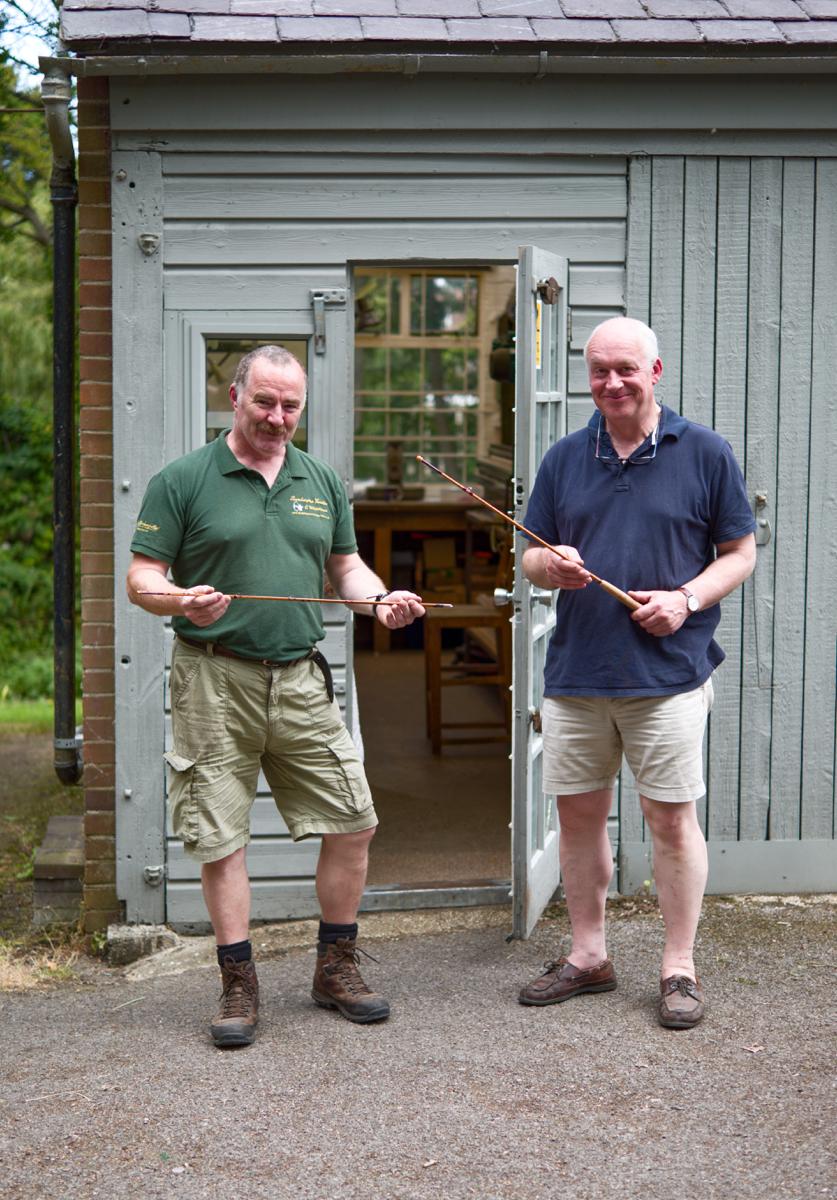
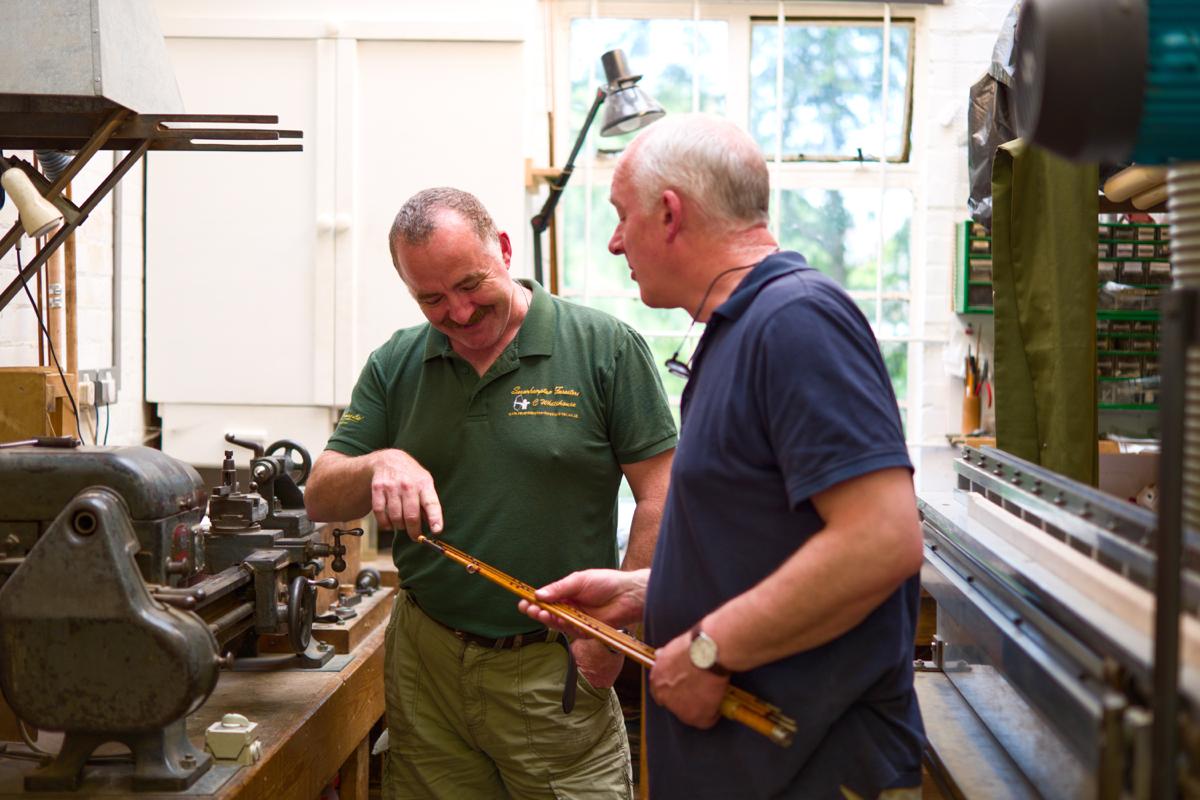

I first met Edward and Colin back in 2003 after relocating to the United Kingdom from Germany. Having read of their work in various publications, I duly made my way to Newbury and ended up ordering a 7 ½ foot #4 rod in 3 piece format. It was handed over to me about a year later; an exquisitely crafted little rod that’s caught many fish and been on countless adventures and is as good today as it was back then. Simply put, Edward and Colin create impeccable fly rods.
If you agree a time to meet him and Colin - and yes, you do need to make an appointment as they’re otherwise always hard at work - you will be warmly greeted and offered a cup of tea. Half an hour or longer will flash past during which you realise that Edward and Colin have a veritable encyclopaedic knowledge of the craft; very likely you will gain some new insights and
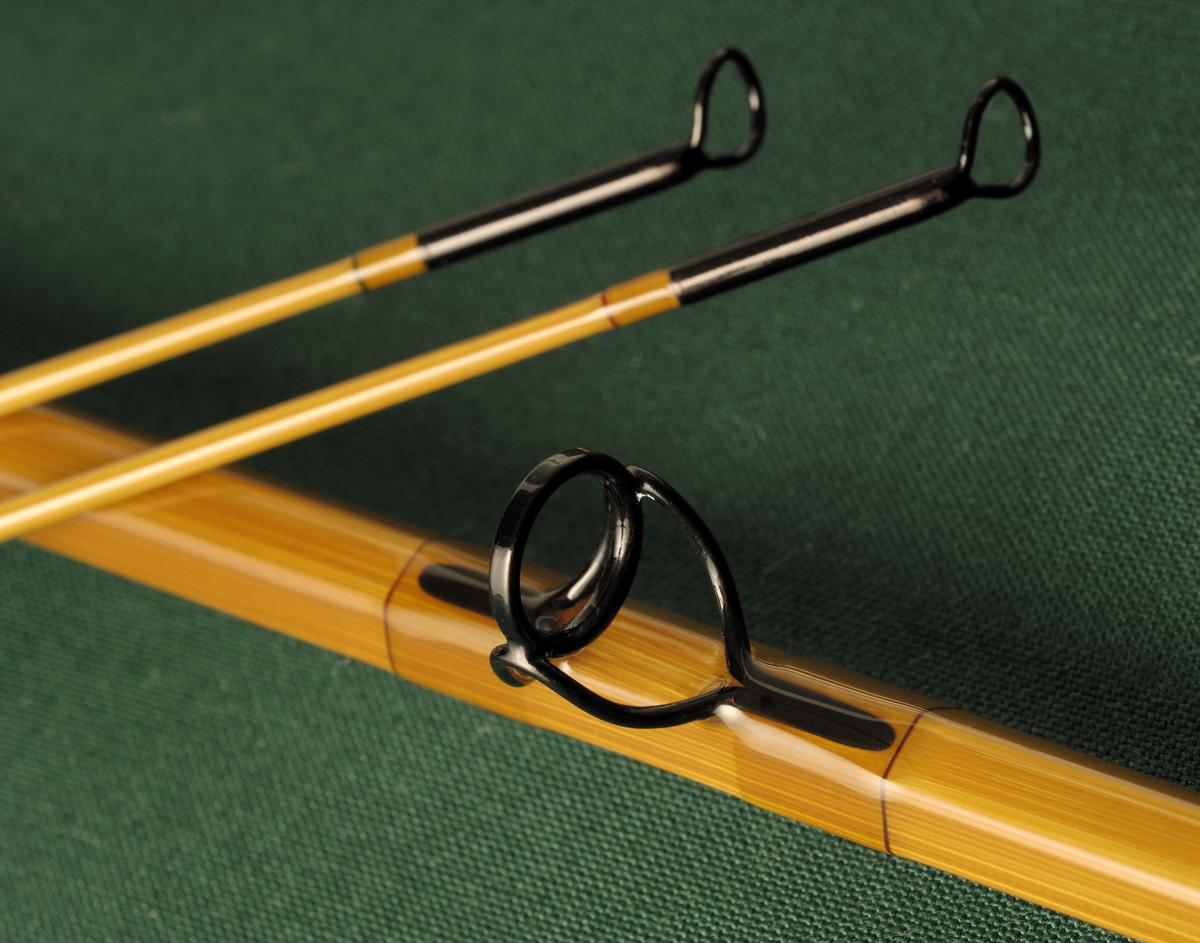
p e r h a p s e v e n s h a k e h a n d s o n t h e commission of a new fly rod. Two to three years (think more three than two!) later, you will receive the call that “it’s ready”. That’s a special moment I’ve enjoyed a couple of times!
Edward is an impeccable gentleman too. If you take along your battered, no-name brand cane rod that in truth might do better holding up sweet peas on your allotment, he might merely refer to it as “an adequate fishing tool”, leaving it to you to decipher the true meaning! Cane rod makers are generally a very collegiate but in some respects also intensively competitive, more than occasionally secretive and always proud bunch. Wikileaks even at their most effective wouldn’t get anywhere near Edward’s proprietary tapers; you’ve more chance of getting hold of the specifications on the new Polaris missile!
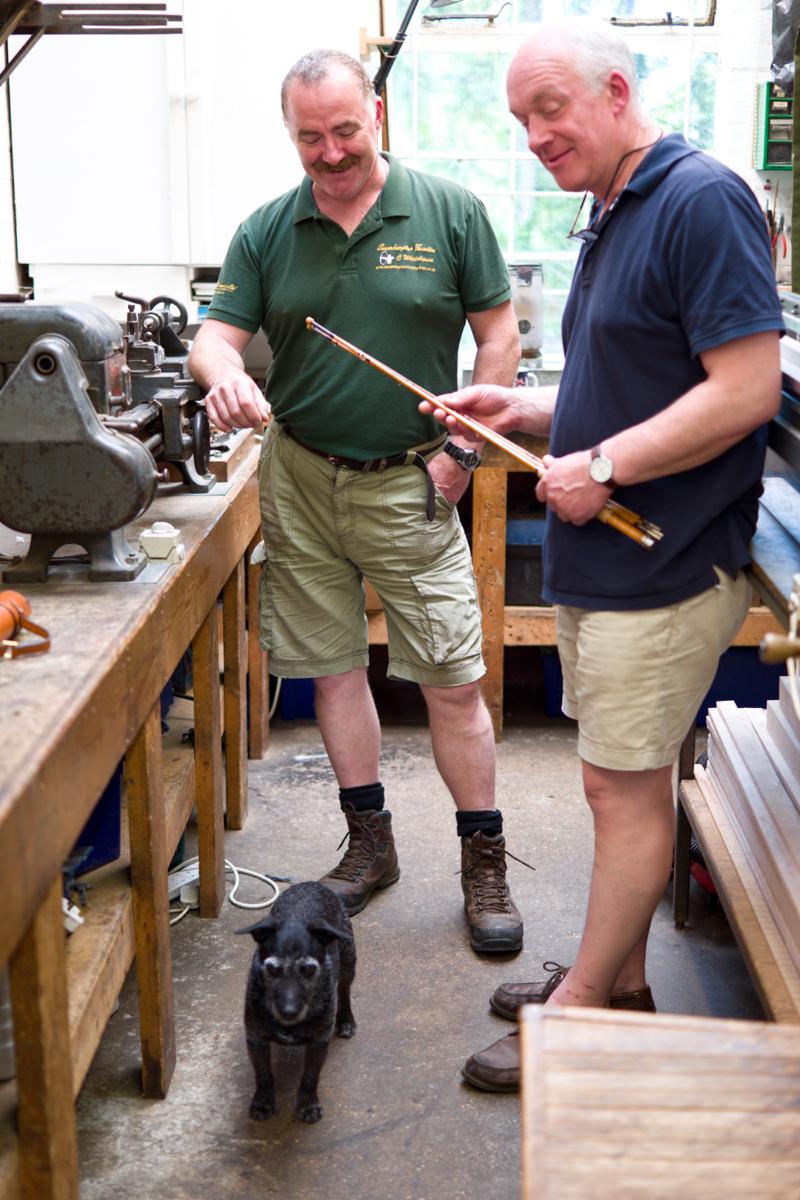
Now and then some titbits of information are shared with trusted friends. The varnish work on a Barder rod is second to none; in my e s t i m a t i o n t h e f i n e s t e v e r w h e t h e r contemporary or vintage. Edward once told me how he goes about varnish work; rather more akin to a well-planned and executed military manoeuvre than a rod making enterprise.
The day before, it’s all about the weather forecast; the temperature has to be just so! Then on the day, Edward will cycle to the workshop very early; remove his shoes at the door and sit motionless in the varnishing area for anything up to two hours without moving a muscle so as to allow every particle of dust to settle. Dust is the mortal enemy of the rod maker!
Only then will he apply a coat of varnish with a brush - no, his rods aren’t dipped - before stealthily creeping out again. Sound a bit over the top? Well, when you hold one of his rods in your hands, you will undoubtedly be bowled over by the quality of the finish and, as with most of the finest things in life, this doesn’t happen by accident.
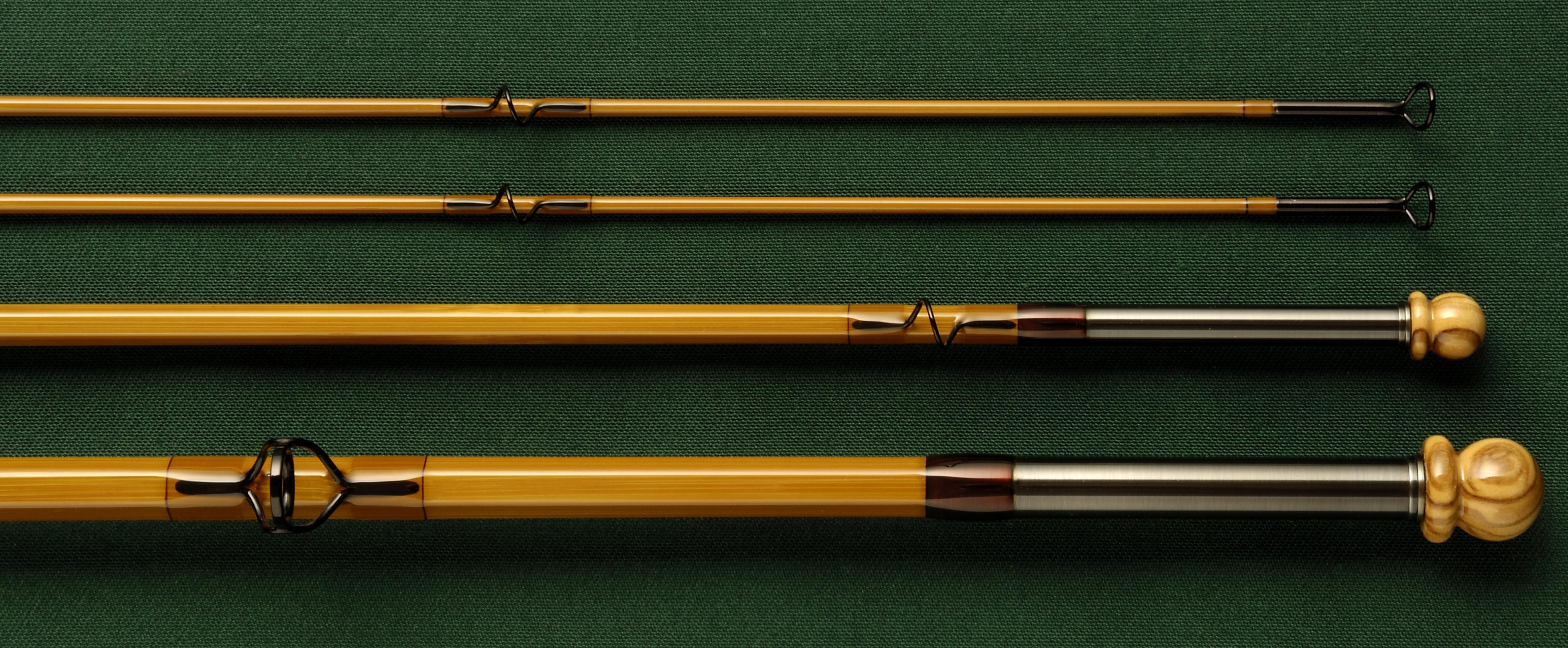
Colin Whitehouse - a gentle man in the literal sense - takes care of the silk bindings and metalwork; most recently, the latter involves titanium, beautiful to behold but far from easy to work with. His flawless work complements that of Edward; a team of the highest possible order.
Years ago, Edward told me that “making split cane rods was all I ever really wanted to do”; this says it all really. If you are blessed with a vocation that you truly love, you are indeed one of a chosen few. Barder rods are the benchmark for split cane today; these

In a world demanding instant gratification, a Barder rod is the antithesis; but the wait is worth it. The first cast with your new Barder rod will have you hopelessly and irretrievably “hooked” and if you’re like me, you will very likely go back for more!
Visit www.barder-rod.co.uk to view available models or to contact the maker










